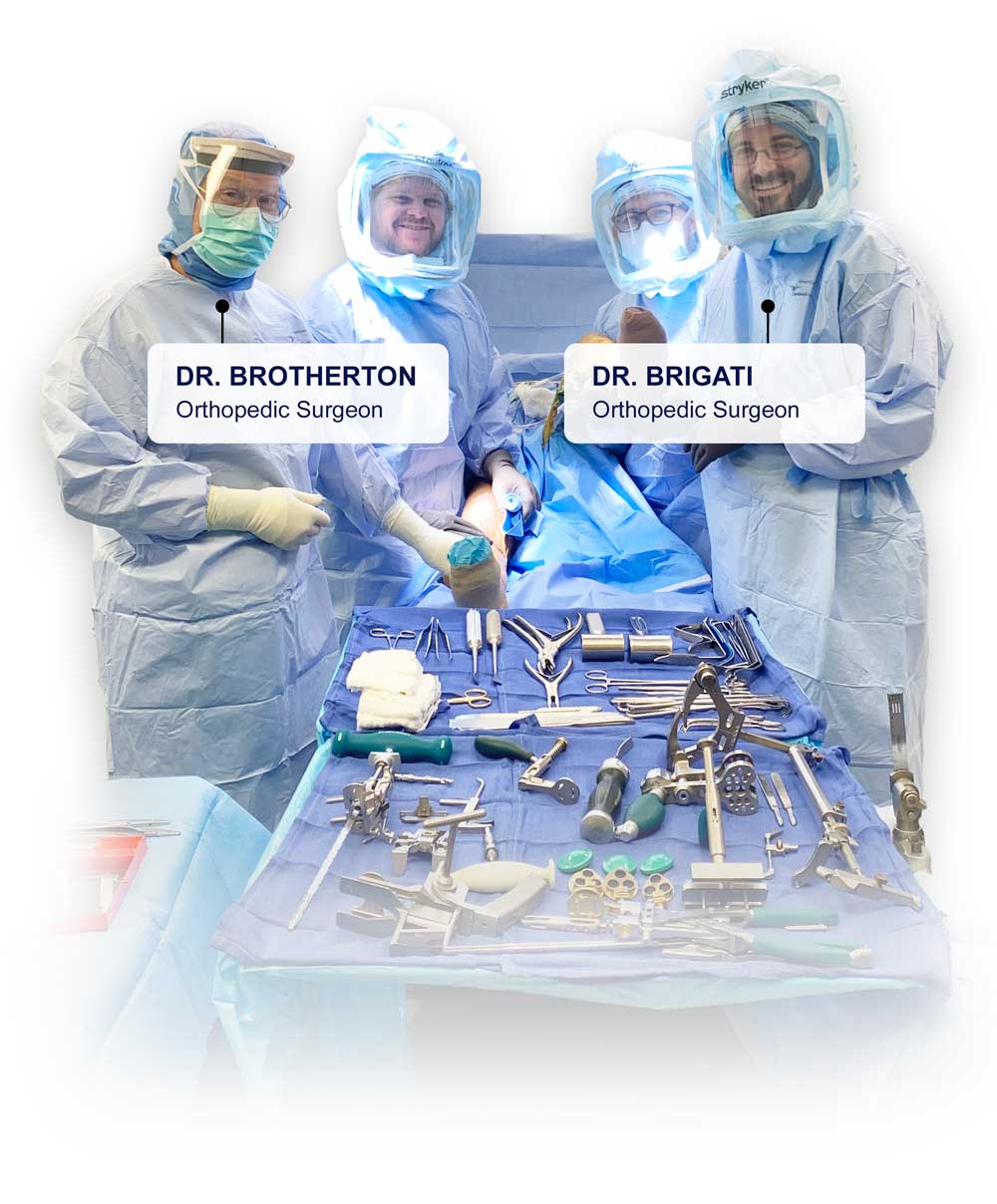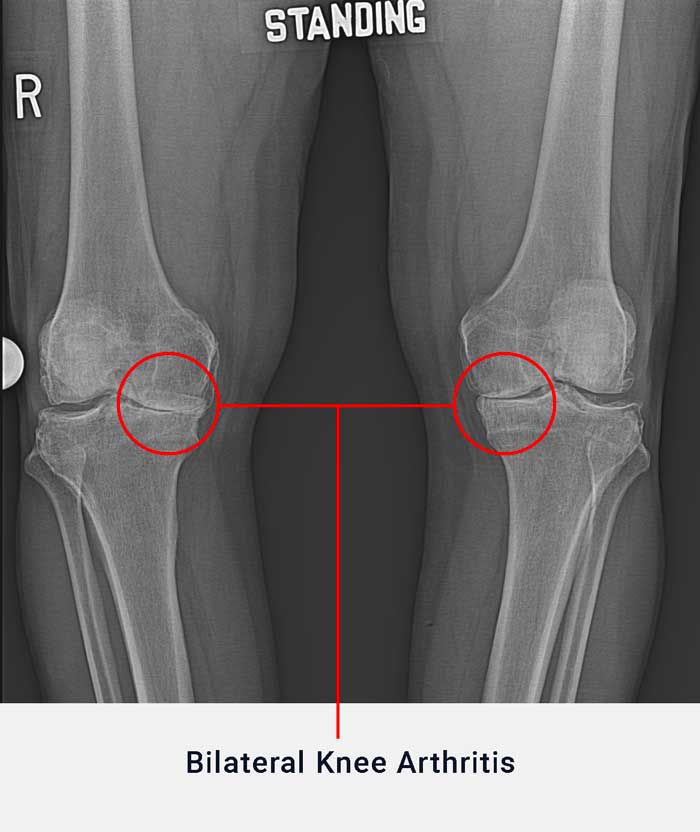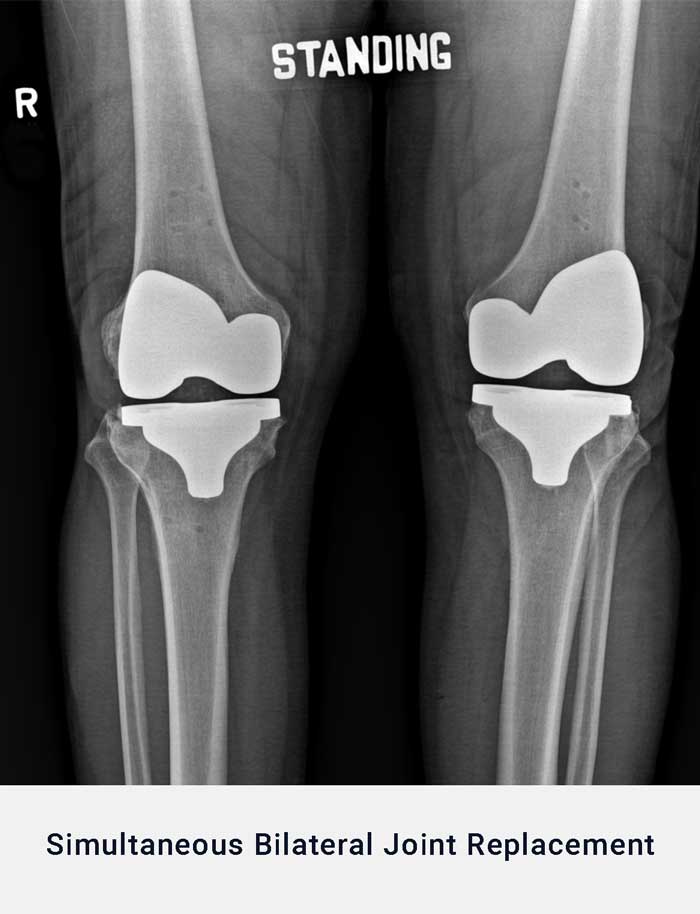Simultaneous Bilateral Total Joint Replacement
The Advantage of a Two Surgeon Team
Patients with painful severe bilateral arthritis (arthritis in both knees or both hips) that has failed conservative management are faced with a choice: staged or simultaneous bilateral total joint replacement.
Staged Joint Replacement
Staged bilateral joint replacement means doing one joint replacement surgery at a time. The patient must wait around 6 to 12 weeks before operating on the other joint that needs to be replaced, leading to a longer overall process from initial surgery to recovery and requires two separate surgical processes.
Simultaneous Joint Replacement
Simultaneous bilateral total joint replacement is when both hips or knees are replaced on the same day under the same anesthetic. Some of the downsides of simultaneous bilateral joint replacement (longer time under anesthesia, increased blood loss, higher risk of early medical complications) can be mitigated when your surgeon chooses to work together with a partner surgeon in the operating room. The two surgeons each replace one joint, simultaneously. This results in significantly less time under anesthesia, less blood loss and has been shown to result in fewer medical complications for the patient.

What You Need to Know
About Simultaneous Bilateral Joint Replacement
Who is a candidate for simultaneous bilateral joint replacement?
While your surgeon will consider your individual case together with you through shared decision-making, here are the typical appropriate candidacy criteria for simultaneous bilateral joint replacement:
- Numeric age under 75 or physically fit if over 75
- Appropriate body weight (Body mass index less than 35-40 kg/m2)
- Physically healthy without significant heart, lung, liver or kidney problems
- Either non-diabetic or very well controlled diabetes mellitus
- Motivated patient with strong social support (family/friends) to help with recovery
- Deformity or contractures of both hips or knees that require both sides to be done at the same time
What are the PROS of simultaneous bilateral joint replacement?
- Lower patient cost due to a single hospitalization, physical therapy recovery, and missed time from work
- Shorter total combined recovery time
- Convenience of same day completion of both sides so you do not have to go back to surgery just when you finally feel recovered from the first one
- If you have a significant deformity or contracture of both hips or knees, we can avoid having a poor outcome on the first side because the second side remains poorly functioning during the initial recovery
What are the CONS of simultaneous bilateral joint replacement?
- Longer time under anesthesia
- More blood loss with an increased chance of needing a blood transfusion
- Increased risk of medical complications around the time of surgery
- Longer initial hospitalization
- More difficult recovery with a higher chance of needing a skilled nursing facility stay
What is the best strategy when considering simultaneous bilateral joint replacement – The Advantage of 2 Surgeon Teams?
The concept of two-surgeon teams can help mitigate against some of the CONS of simultaneous bilateral joint replacement. This is when your surgeon chooses to partner with a second surgeon in the operating room where one doctor does one hip or knee replacement at the same exact time as the other doctor simultaneously completes your other hip or knee replacement. This results in significantly less time under anesthesia, less blood loss and has been shown to result in fewer medical complications for the patient. This does create some logistical challenges of meeting both surgeons and arranging a surgical date when all three people (both surgeons and the patient) are available. However, we at Fort Worth Bone and Joint are committed to utilizing our multiple doctors who specialize in joint replacement to get you the best surgical outcome with the fewest complications.



